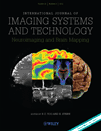
INTERNATIONAL JOURNAL OF IMAGING SYSTEMS AND TECHNOLOGY
Scope & Guideline
Empowering Insights in Biomedical Imaging and Beyond
Introduction
Aims and Scopes
- Medical Imaging Techniques:
The journal emphasizes the development and application of diverse medical imaging modalities, including MRI, CT, ultrasound, and PET, to improve diagnostic accuracy and treatment planning. - Deep Learning and AI Applications:
A substantial focus is placed on the use of deep learning and artificial intelligence to automate and enhance image analysis, classification, and segmentation tasks in various medical contexts. - Multimodal Imaging and Fusion:
The journal explores the integration of multiple imaging modalities to provide comprehensive diagnostic information, enhancing the understanding of complex medical conditions. - Image Processing and Enhancement Techniques:
Research on innovative algorithms and techniques for image processing, enhancement, and segmentation is a key area, aiming to improve the quality and interpretability of medical images. - Clinical Applications and Outcomes:
The journal also emphasizes studies that bridge the gap between imaging technology and clinical practice, showcasing how advancements in imaging systems can lead to better patient outcomes.
Trending and Emerging
- Federated Learning and Privacy-Preserving Techniques:
With the increasing emphasis on patient data privacy, there is a growing trend in research focusing on federated learning models that allow collaborative learning without sharing sensitive data. - Explainable AI in Medical Imaging:
There is an emerging focus on explainable AI techniques that enhance the interpretability of deep learning models, ensuring that clinicians can understand and trust AI-driven diagnostic recommendations. - Integration of Augmented and Virtual Reality:
Research exploring the applications of augmented reality (AR) and virtual reality (VR) in medical imaging and training is gaining traction, offering innovative ways to visualize and interact with complex data. - Telemedicine and Remote Diagnostics:
The rise of telemedicine has led to an increase in studies focusing on remote diagnostic capabilities, utilizing imaging technologies to facilitate off-site consultations and patient monitoring. - Real-Time Imaging and Analysis:
There is a trend towards developing real-time imaging systems capable of immediate analysis, which is particularly relevant in surgical and emergency settings where timely decision-making is crucial.
Declining or Waning
- Traditional Image Analysis Techniques:
There is a noticeable decrease in publications focused on conventional image analysis methods, as researchers increasingly shift towards machine learning and AI-driven approaches. - Basic Imaging Hardware Innovations:
Research centered on fundamental hardware innovations for imaging systems has diminished, as the field increasingly prioritizes software advancements and algorithmic improvements. - Manual and Semi-Automated Techniques:
The reliance on manual and semi-automated techniques for image analysis has waned, giving way to fully automated systems powered by AI and deep learning, reflecting a broader trend towards automation in medical imaging.
Similar Journals

EUROPEAN JOURNAL OF RADIOLOGY
Pioneering Insights for Radiology ProfessionalsThe European Journal of Radiology, published by Elsevier Ireland Ltd, is a premier peer-reviewed journal in the fields of radiology, nuclear medicine, and imaging. Established in 1981, it has carved a significant niche within the academic community, showcasing innovative research that enhances medical imaging practices and improves patient care. With an impressive ranking in the Q1 category for both Medicine (miscellaneous) and Radiology, Nuclear Medicine, and Imaging in 2023, the journal is recognized globally for its commitment to advancing scientific knowledge and improving imaging methodologies. The journal's Scopus ranking of #60/333, placing it in the 82nd percentile, underlines its reputation for high-quality research and scholarly contributions. While traditionally a subscription-based journal, it continually evolves to meet the demands of the academic landscape, aiming to bridge the gap between research and clinical practice. Researchers, healthcare professionals, and students alike can benefit from exploring its extensive archives and current publications, which are curated to foster education and innovation in the medical imaging domain.
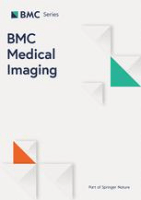
BMC MEDICAL IMAGING
Unveiling New Frontiers in Medical Imaging Research.BMC Medical Imaging is a premier open-access journal dedicated to advancing the field of radiology, nuclear medicine, and imaging technologies. Published by BMC in the United Kingdom, this journal serves as a vital resource for researchers, clinicians, and students, fostering a collaborative environment for sharing innovative findings and methodologies in medical imaging. With a commendable impact factor and an impressive Scopus ranking within the top 35% of its category, BMC Medical Imaging provides a platform for high-quality research to be disseminated widely and freely since its inception in 2001. The journal aims to cover a diverse array of topics, from advanced imaging techniques to their clinical applications, enhancing the understanding and effectiveness of diagnostic practices. By contributing to the body of knowledge and facilitating open access to research, BMC Medical Imaging plays a pivotal role in shaping the future of medical imaging and improving patient care.

Imaging
Pioneering Research in Radiology and BeyondImaging, published by AKADEMIAI KIADO ZRT, is an esteemed open-access journal dedicated to the field of medical imaging, established in 2020. With an E-ISSN of 2732-0960 and based in Budapest, Hungary, this journal provides a vital platform for the dissemination of cutting-edge research and advancements in imaging techniques, especially in the realms of radiology, nuclear medicine, and ultrasound technology. While currently positioned in the Q4 category across multiple medical specialties, the journal continues to strive for improvements in visibility and impact, contributing to the evolving discourse in medical imaging. The journal aims to facilitate an inclusive and collaborative environment for researchers, professionals, and students, inviting them to share their findings and insights to enhance the field's development. With open-access availability since its inception, Imaging ensures free and easy access to its content, fostering a greater understanding and appreciation of innovative imaging practices worldwide.
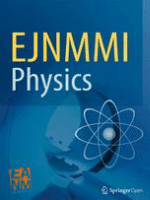
EJNMMI Physics
Exploring the Intersection of Innovation and Medical Imaging.EJNMMI Physics, the premier journal for advancements in nuclear medicine and imaging, is published by Springer in Switzerland and has been an open-access outlet since 2014, allowing for broad dissemination of critical research findings. With an ISSN of 2197-7364, the journal aims to bridge the gap between state-of-the-art physics and practical applications in biomedical engineering and radiology. Its impressive Q1 ranking in multiple categories, including Biomedical Engineering, Instrumentation, Radiation, and Radiology, Nuclear Medicine and Imaging, exemplifies its significant impact in the field. The journal boasts exceptional metrics with Scopus rankings placing it in the top echelons across disciplines, including a 6th position out of 58 in Radiation, and serves as an essential resource for researchers, professionals, and students who are eager to contribute to and stay informed about cutting-edge scientific advancements. With a broadening scope until 2024, EJNMMI Physics is an indispensable tool for those dedicated to pushing the boundaries of knowledge in medical physics and imaging technologies.
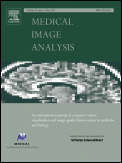
MEDICAL IMAGE ANALYSIS
Advancing the Future of Diagnostic Imaging.MEDICAL IMAGE ANALYSIS, published by ELSEVIER, stands as a premier journal in the fields of computer science and medical imaging, particularly focusing on the intersection of Computer Graphics, Computer Vision, and Health Informatics. With an impressive impact factor and a consistent classification in the Q1 quartile across multiple domains including Radiology and Radiological Technology, this journal attracts high-quality research and innovative methodologies that significantly contribute to advancing medical practices and technology. Based in the Netherlands, and covering a gamut of topics from 1996 to 2025, it serves as a vital platform for disseminating cutting-edge studies aiming to enhance diagnostic accuracy and treatment planning through sophisticated imaging techniques. While it does not offer Open Access options, the journal’s rigorous peer-review process and high Scopus rankings—positioning it within the top percentiles across several categories—further solidify its reputation as an essential resource for researchers, professionals, and students committed to the evolution of medical imaging.
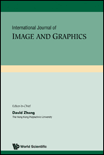
International Journal of Image and Graphics
Pioneering Research in Image Processing and GraphicsInternational Journal of Image and Graphics, published by World Scientific Publishing Co. Pte Ltd, serves as an essential platform for scholars and practitioners in the realms of Computer Graphics, Computer-Aided Design, and Computer Vision and Pattern Recognition. Established in 2001 and based in Singapore, this journal has become increasingly influential, with a reputation reflected in its Q3 and Q4 rankings across key categories in Scopus, highlighting its growing impact in the academic community. Open access options remain limited; however, the journal's commitment to disseminating high-quality research allows for a rich exchange of ideas among professionals and students alike. As the 2023 metrics indicate, contributions to the journal not only enhance individual academic portfolios but also promote advancements in image processing, fostering innovation and growth within the discipline until at least 2024. It is thus a vital resource for anyone looking to deepen their knowledge and understanding of contemporary trends and technologies in image processing and related fields.
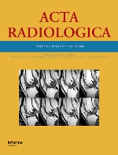
ACTA RADIOLOGICA
Shaping the Future of Radiology Since 1921ACTA RADIOLOGICA, published by SAGE Publications Ltd, is a premier journal dedicated to the evolving field of radiology, bridging the gap between clinical practice and research from its inception in 1921 to its anticipated continuation until 2024. With an ISSN of 0284-1851 and an E-ISSN of 1600-0455, this esteemed journal holds a significant position in the academic landscape, reflected in its 2023 rankings as Q3 in several categories, including Medicine (miscellaneous), Radiological and Ultrasound Technology, and Radiology, Nuclear Medicine and Imaging. Although currently not an open-access journal, ACTA RADIOLOGICA offers robust subscription options allowing a wide readership among researchers, healthcare professionals, and students striving to stay at the forefront of radiological advancements. The journal publishes original research, reviews, and clinical studies that contribute to the understanding and application of imaging technologies, underscoring its vital role in shaping modern medical practices.

Biomedical Engineering Online
Pioneering discoveries in biomedical engineering since 2002.Biomedical Engineering Online, published by BMC, is an esteemed open-access journal in the United Kingdom that has been advancing the field of biomedical engineering since its inception in 2002. With a commitment to disseminating high-quality research, the journal encompasses a broad scope, including innovative studies in biomaterials, imaging technologies, and medical applications. Recognized within the Q2 quartile for various categories such as Biomaterials and Biomedical Engineering, it ranks favorably among its peers: Rank #58 out of 333 in Radiology, and Rank #15 out of 63 in Radiological and Ultrasound Technology in the Scopus database. These rankings, coupled with an open-access model, ensure that critical advancements in medical technology are accessible to researchers, health professionals, and students globally. As it continues through its converged years from 2002 to 2024, Biomedical Engineering Online remains an invaluable resource for anyone involved in the cutting-edge intersection of engineering and medicine.

JOURNAL OF NEURORADIOLOGY
Pioneering discoveries in neuroradiology since 1974.JOURNAL OF NEURORADIOLOGY is a leading peer-reviewed journal dedicated to advancing the field of neuroradiology. Published by MASSON EDITEUR, and based in France, this journal serves as a vital resource for professionals and researchers focusing on clinical neurology and various imaging technologies. With an impressive impact factor reflective of its robust contribution to the literature—ranking in the Q2 quartile across categories such as Neurology (clinical), Radiological and Ultrasound Technology, and Radiology, Nuclear Medicine and Imaging—the journal is positioned prominently within its field. Researchers can access the journal through subscription options, providing valuable insights into the latest developments, techniques, and empirical studies that shape neuroradiological practices. With its inception dating back to 1974 and coverage extending to current advancements, JOURNAL OF NEURORADIOLOGY is crucial for fostering knowledge and innovation, making it indispensable for both seasoned experts and emerging scholars alike.

COMPUTERIZED MEDICAL IMAGING AND GRAPHICS
Innovating the Intersection of Technology and HealthcareCOMPUTERIZED MEDICAL IMAGING AND GRAPHICS, published by PERGAMON-ELSEVIER SCIENCE LTD, is a leading international journal that has significantly contributed to the fields of medical imaging, graphics, and informatics since its establishment in 1988. With a remarkable reputation reflected in its Q1 quartile rankings across multiple categories—including Computer Graphics, Health Informatics, and Radiology—this journal maintains a prominent position in the academic community, evidenced by its Scopus rankings where it ranks in the top percentile across various disciplines. The journal aims to advance knowledge and innovation within the intersection of technology and healthcare, featuring high-quality research that addresses contemporary challenges in medical imaging and graphical methodologies. With no open access options currently available, this journal serves as a crucial resource for researchers, professionals, and students who are at the forefront of advancing imaging technology and its applications in medicine.